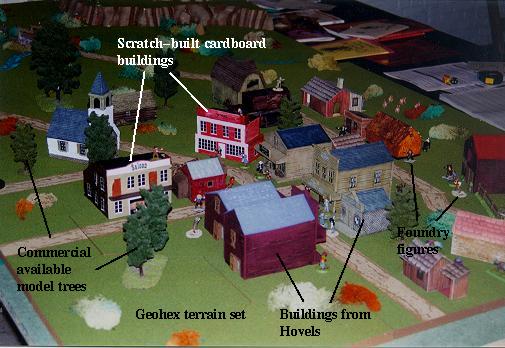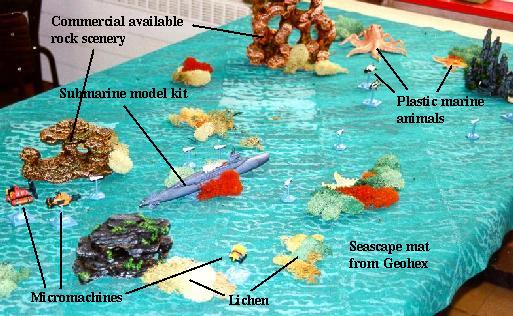Miniature Wargaming Club Leuven

'Schild en Vriend' is an old Flemish battlecry, used in the rebellion of the city of Brugge against the French, May 18, 1302. Legend tells that it was used to differentiate between the French-speaking (who could not pronounce 'schild') and Flemish-speaking citizens. Nowadays, historians tell us that it was probably 'Des Gilden Vriend'.

Visual Appeal in Miniature Wargaming
One of our motto's is Visual Appeal is Everything. Indeed, if it weren't for beautiful figures and great-looking terrain, why would you play miniature wargaming? Of course, the other aspects of the hobby are important too, such as the military tactics, the study of game rules, the interest in periods, but the three-dimensional battlefield is what sets miniature wargaming really apart from other forms of wargaming, such as board wargaming or computer wargaming. Therefore, Visual Appeal is Everything.
Contrary to what many players belief, this does not mean that you have to spend great amounts of time in painting every figure up to a painting competition standard. In most of the cases, the figures are not the main features that you see on the battlefield. Superbly painted figures standing on a piece of cardboard that represents a hill do not look as well as speed-painted figures standing on a fully-textured styrofoam hill.
This section will try to give some hints and tips on how to achieve a good visual appeal on your miniature battlefields.

Terrain
The following pictures show what's possible with varying approaches. The first picture is taken from a Star Wars game, with most scenery scratch-built. The second picture comes from a game where more money is spent to build up the scenery.


Finally, a picture from our Aquazone game shows that even a small amount of just the right scenery items can produce a quite spectacular result:

How to do it?
If you want to find out more about the above terrain, and about terrain for wargames in general, click your way over to our new

Figures
There are various approaches to painting figures. In this section, we will give 2 extremes: speed painting and painting upto competition quality. When painting figures, keep in mind the following:
- How much figures are needed for the game? If it is a skirmish-level game with only a few figures on each side, you can afford to put more time in painting.
- How well can you paint? This works both ways: good painters will automatically devote more time to their figures, but it also means that due to their experience, a good effect can be obtained in a minimum of time.
- What figures do you have? If you use plastic Airfix figures, you might not bother painting them at all, just base them in visual appealing way. If you have high-quality Foundry figures, painting can be very rewarding.
- Do you want to use the figure solely for playing, or also for entering competitions and showing it off to your friends?
How to do it?









